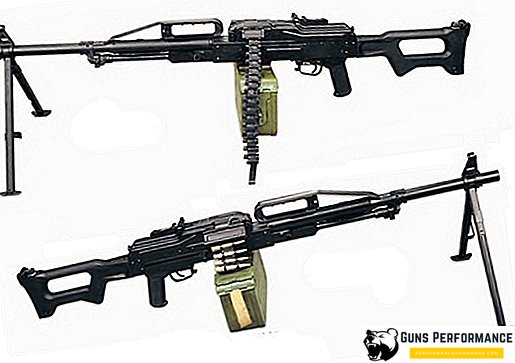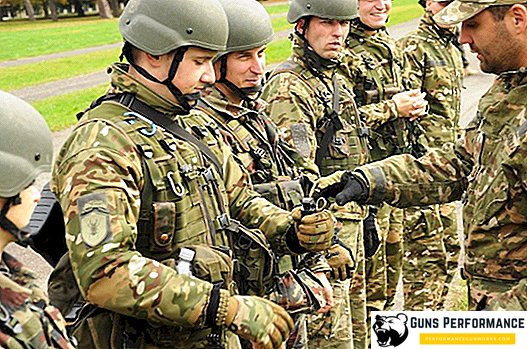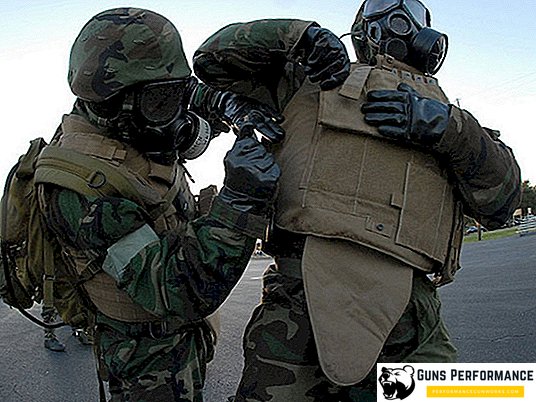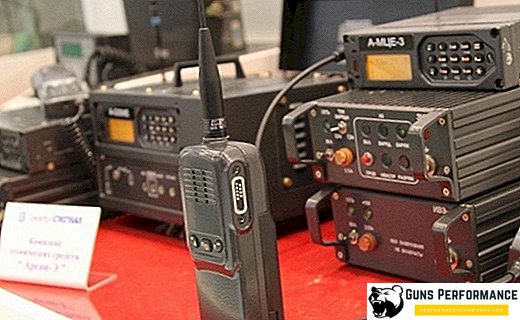In the New History, the development paths of many countries of the world have radically changed. This political process was most vividly manifested in Asia, where the state system of governance had more ancient roots, relying on the mentality of peoples and traditions. This was facilitated by numerous wars and social revolutions, which in some cases changed not only the state system, but also led to a change in foreign policy.
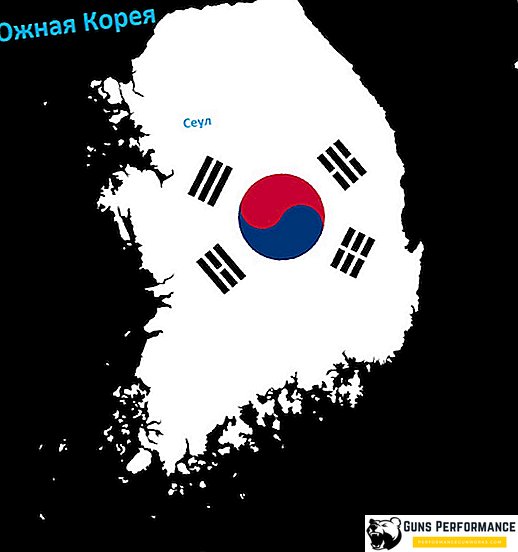
The situation in the Far East in this sense is very indicative. If China and Japan changed in favor of the political situation, then Korea became a hostage to the circumstances that arose during the acute military-political conflict. Against the background of a comprehensive tendency of peoples to self-determination, to unification on a national and geographical basis, Korea, on the contrary, was forced to split into two states. The Second World War, which ended the Japanese Empire, marked the beginning of the division of the once united country into the communist North and the capitalist South. Since the second half of the 20th century, North and South Korea have existed on the political map of the world.
In the Democratic People’s Republic of Korea for more than 60 years, the entire system of government has revolved around members of the same family. To the south of the 38th parallel, there are democratic institutions of state power, among which the presidency of South Korea occupies one of the leading places on the country's political Olympus. How important is the presidential post for the South Korean state, and what is the real status of the head of state, showed the history of the country.

The political life of South Korea has its own distinctive feature. The format of the political regime established in the country directly depended on the personality of the head of state. This factor explains the existence of the six republics that South Korea experienced during the period from 1948 to 1988:
- First Republic - 1948-60;
- The second republic (parliamentary) 1960-62;
- Third Republic - 1963-1972;
- The fourth republic from 1973 to 1981;
- Fifth Republic - 1981-88;
- The Sixth Republic is a political regime established in 1988 and still in force today.
Background of the presidential branch of government in South Korea
Korea until 1945 was very far from independent statehood. Despite the fact that during the period of colonial dependence on the country of the Rising Sun, Korea turned from a feudal country into an economically developed region of the Far East, the social and social level of development of the Korean nation remained at an extremely low level. In Korea, there were no civilian social institutions of their own. All power and governing bodies were in the hands of the Japanese colonial administration, headed by the Governor-General.

Despite the disastrous military-political situation in August 1945, the Japanese Empire until the last moment tried to keep the Korean Peninsula in the sphere of its influence. The stubborn resistance of the Japanese led to the fact that the country of the Morning Dawn was the last hot spot of the armed confrontation between the Allies and the crumbling Empire. As a result of the agreements reached by the Allies at the Potsdam Conference, at the end of the war on the peninsula were Soviet and American troops. The Soviet Army occupied the northern part of Korea, while American units led by General Douglas MacArthur landed in the southern part of the country.
This alignment of forces contributed to the early defeat of the Japanese troops, but ultimately became a fatal factor in the division of the country into two social and public camps. With the support of the Soviet military administration, Korean communists quickly seized power in the North of Korea. In the southern part of the peninsula, with the support of the American occupation forces, the process of democratization of Korean society began. The Americans in their area of responsibility transferred most of their administrative powers to the Provisional Government of Korea, who returned to the country from exile. A new political elite of the state is forming around the new cabinet, headed by Lee Seung Man - the head of the Korean government in exile.

In the Soviet zone of responsibility, the communists tried to take control of all the basic state and administrative functions. Each of the political forces claimed its supremacy of power throughout the country, which later resulted in the most bloody military conflict of the second half of the XX century. At first, the leadership of the USSR and the USA succeeded in restraining the political ambitions of their wards, but the further development of the situations came out of the control of the military administrations of the allies. North Korean communists sought to extend their influence to the entire territory of the Korean Peninsula, but in the American zone of responsibility, irreversible internal processes began to create an independent Korean state. The result of the protracted military-political crisis was the formation of the Republic of Korea in the south of the Korean Peninsula on August 15, 1948. By the results of voting in the Constitutional Assembly, the head of the Provisional Government, Lee Seung Man, becomes the first president of the Korean state.
In contrast to the situation in the south, events unfolded in the North of the Korean Peninsula. Literally three weeks later, on September 9, 1948, the communist North proudly announced the formation of a state - the Democratic People’s Republic of Korea. The leader of the North Korean Communists, Kim Il Sung, became the Head of North Korea as Chairman of the Council of Ministers of the DPRK. From this point on, both Korean states begin their individual development path and take the path of tough confrontation.

First President of the Republic of Korea
The identity of the first president of South Korea is rather controversial. Lee Seung Man, the political leader of the Provisional Korean Government during the Japanese colonial regime, was highly respected by national political forces in the American area of responsibility when he returned to the country. No less fruitful was the activity of Seung Man’s foreign policy arena. Not only the American military administration listened to his words. The person Lee Seung Man has been attentively treated in Washington. The stubborn stance of the Korean leader in terms of establishing an independent Korean state was supported by influential overseas patrons.

Having received the support of his political ambitions, Lee Seung Man at the beginning of 1948 heads the Provisional Legislative Assembly. Four months later, he was already becoming a member and speaker of the Constitutional Assembly, being the leader of the National Alliance - the largest political force in South Korea. According to the results of the presidential elections of July 20, 1948, the first in the political life of the Korean state, Lee Seung Man won a landslide victory, receiving more than 90% of the votes of the electors appointed from among the members of the Constitutional Assembly.
Three and a half weeks later, on August 15, the official transfer of power to the new head of state from the US military administration took place - the first president of the Republic of Korea took office. Formally, the President of the Republic of Korea had authority over the entire territory of Korea, including the southern and northern parts of the country. In fact, the powers of the President of the First Republic were geographically limited to the 38th parallel, to the north of which the communist regime ruled.

Despite the fairly democratic course of the presidential company, the presidency of Lee Seung Man is a controversial period in the history of the First Republic. The democratic reforms promised by the candidate of the ruling party have not begun. From the first days of being in the highest state post, the new head of state set a course for an implacable struggle with the opposition movement. Under the guise of fighting the Communists, Lee Seung Man fiercely fought with opposition of any color. After the adoption of a number of laws against the rights of the opposition, the regime is slipping into an authoritarian style of government.
During the first term of the presidency of Lee Seung Man, South Korea plunges into the darkness of political obscurantism. For three years, from 1948 to 1951, more than 12 thousand people died at the hands of the internal security forces, whose activities were considered dangerous for the ruling regime. In foreign policy, the first president of the Republic of Korea was forced to face serious opposition from the country's communist North. After the withdrawal of the Soviet and American troops from the peninsula in 1949, the political situation on the Korean Peninsula became extremely tense. The goals and objectives that set themselves communist North Korea and the First Republic, clearly spoke of the claims to the rule of power throughout the country. The result of such a political clinch was the Korean War, which began on June 25, 1950.

The armed conflict, which lasted for three years, became the bloodiest in the entire post-war history. Unable to achieve serious success in the armed confrontation, both conflicting parties were forced to sign a peace treaty on July 27, 1953, which stopped the hostilities de jure on the peninsula. The front line, on which the enemy troops stopped, practically coincided with the line of the 38th parallel, which later became the border between both Korean states.

Officially, both Korean states have been at war for 68 years. The South Korean government refused to ratify the peace treaty of 1953, therefore the de jure state of war between the two parts of Korea continued. Only 68 years later, on April 27, 2018, both sides officially announced the end of the state of war.
The political regime of Lee Seung Man and the end of the First Republic
Despite the difficult internal political situation and the war, the established political regime of the first president managed to hold out for quite a long time. In many respects, this is due to Lee Seung Man himself, who through clever political maneuvers, falsification of the results of the electoral process and tough pressure on the opposition, managed to win the presidential elections twice, in 1952 and in 1956.

The South Korean leader, having settled in the difficult for the country 1950-51 war years, puts forward his candidacy for the next elections, which were to be held in 1952. Not having strong political support in the National Assembly, the current president is initiating amendments to the country's Constitution, in accordance with which the presidential election should be held during the course of a nationwide vote. After the government was able to suppress opposition protests through repression, the necessary amendments to the Basic Law were made. As a result of the vote on August 5, 1952, Lee Seung Man won a landslide victory, managing to remain in his post for two terms in a row. 76% of voters cast their ballots for the first president of the country.
With the end of hostilities, South Korea found itself in a difficult economic situation. Against this background, another election campaign proceeded, during which the political regime of Lee Seung Mana managed to win a convincing victory. A huge role in the success of the current president was played by economic assistance from overseas, which was expected by the political regime of Lee Seung Man. Thus, he managed to become the first head of state in the history of South Korea to remain in high office for three consecutive terms.

The history of the First Republic is closely related to the period of the presidency of Lee Seung Man. The 1948 constitution provided for the creation of a political system in the country with a strong presidential power. This fact ultimately destroyed the First Republic. In 1960, the incumbent president initiated amendments to the Basic Law, allowing the head of state to run for a subsequent term. However, civil society reacted negatively to such changes, which subsequently resulted in mass protests and acts of civil disobedience. The April 1960 revolution overthrew the political regime of Lee Seung Man and established the Second Republic in the country.
Presidents of South Korea in the Second, Third and Fourth Republics
After a twelve-year period of authoritarian rule by anti-communist Lee Seung Mans, South Korea for the first time in its history receives a parliamentary form of government. The period from August 1960 to March 24, 1962 is considered in the political history of the country the period of the Second Republic. At this stage, the role of the president is significantly limited and comes down to representative functions. In August 1960, the National Assembly elected Yoon Boson as the President of the Republic of Korea.

In a short period, Yun Boson was able to carry out a number of political reforms, the purpose of which was to strengthen the role of parliament in the system of government. Under pressure from the military, he was dismissed in March 1960 from the presidency.
From 1962 to 1963, the country was ruled by the Supreme Council for National Perestroika, consisting mainly of representatives of the military elite. The duties of the head of state until 1963 were performed by the chairman of the Supreme Council of National Restructuring, General Pak Chonkhi. As a result of a referendum held in South Korea, the country receives the Third Republic. The presidential form of government is being restored, and Pak Chonhi becomes the third president of the Republic of Korea with strong and extensive powers.

From this point on, the entire system of political power in South Korea is in the hands of the president. Decrees and orders of the head of state have the force of law. In addition, the active participation of the President of the country in the work of the executive is assumed, thereby ensuring control over the work of the government and compliance with constitutional norms. The current Basic Law does not limit the number of presidential terms, so each subsequent political regime in South Korea becomes a continuation of the policy of the next president. This became the reason for the formation of the fourth, fifth and sixth republics.
With the adoption of the new Basic Law - the Yusin Constitution in 1962, the Third Republic ceased to exist. The president received additional powers that strengthened political positions, which were already quite strong. Pak Chonhi managed to retain the presidency of South Korea, remaining to lead the country until 1979. The acute political crisis that began in the country resulted in the assassination of the current head of state. In the conditions of political instability that swept the country in the late 1970s and early 1980s, General Chon Dukhan becomes the fourth president of the Fourth Republic.

Presidential government in South Korea under the Fifth and Sixth Republics
With the arrival on the highest state post of the military, Korea receives a new, already Fifth Republic, which existed until 1988. Chon Dukhan remains in the presidential office until February 24, 1988, when the country received a new Constitution as a result of the reforms. In accordance with its provisions, a system of direct presidential elections is being reintroduced in South Korea. The term of office of the head of state is limited to five years, and the right of the current president to be re-elected for the next term has been eliminated. The Fifth Republic - the Republic of Chon Dukhvan ceased to exist. In the presidential elections held in December 1987, Roe Daewoo won, marking the beginning of the period of the Sixth Republic.

In total in history, until the last Sixth Republic, South Korea had the following presidents:
- Ro Daewoo's years - reign 1988-1993;
- Kim Yonsam served as President of South Korea from February 1993 to February 1998;
- Kim Dezhong became president of the Sixth Republic in February 1993 and remained in the highest state position until February 2003;
- But Muhyon - the years of rule 2003-2008;
- Lee Mönbach was elected in February 2008, remaining in office until February 2013;
- Pak Kunhe - first female president of the Republic of Korea, years of rule 2013-2016; For the first time in the history of the country was removed from office as a result of impeachment;
- Moon Jain was elected in May 2018. The current head of state.

Features of presidential rule in South Korea
A characteristic detail that characterizes the stability of the political system of the South Korean state at the turn of the millennium is control activities and the head of state by the parliament. Впервые парламент страны показал свою силу в 2004 году, пытаясь в результате процедуры импичмента отстранить от власти действующего президента Ну Мухёна.

Вторично, в 2018 году инициированная парламентом процедура импичмента коснулась одиннадцатого президента. Первая женщина - глава государства была отстранена от должности. Мотивом для принятия парламентом такого решения стало обвинение в разглашении действующим президентом государственной тайны.
Еще одной характерной особенностью периода существования Шестой республики становится установление контактов с лидерами Северной Кореи. Начало программе взаимодействия с КНДР положил визит президента Южной Кореи Кима Дэчжуна, осуществленный в 2000 году.

Официальная резиденция президента Республики Корея - Чхонвадэ или Синий дом - комплекс зданий расположенный в столичном районе Чинногу.



